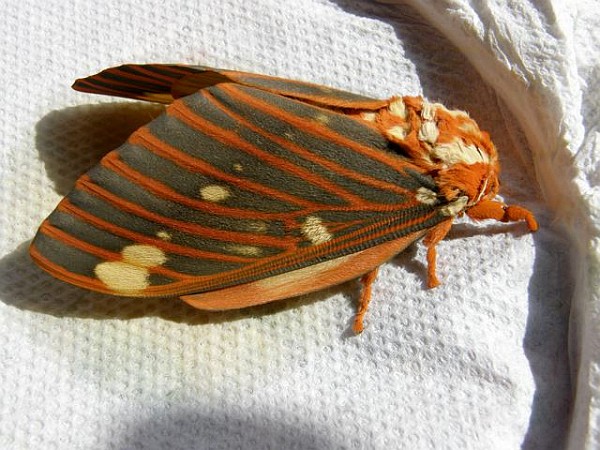
5 August 2011
This amazing creature with beautiful orange and yellow accents is a regal or royal walnut moth (Citheronia regalis), the largest moth north of Mexico with a wingspan of up to six inches.
He didn’t always look like this.
As a caterpillar he molted five times, becoming bright green with scary horns and “about the size of a large hot dog,” according to the Bug Guide. He preferred to feast on hickory and walnut trees, earning him the name hickory horned devil.
In his final instar, when he’d eaten his fill, the hickory horned devil turned a beautiful turquoise color and searched the ground for a suitable place to burrow 5-6 inches under the soil and spend the winter pupating.
Marcy Cunkelman captured this process, beginning in August last year, when the man who services her furnace brought her a hickory horned devil caterpillar. She marked the place where the caterpillar burrowed and brought him above ground at various stages to see what he looked like.
He shed his skin, turned a beautiful color, then became dark and emerged as a moth early this summer.
Here he is just before he flew away, destined to live only a week. Regal moths have no mouths and cannot eat. Their only purpose is to reproduce.
Watch Marcy’s photos of the metamorphosis in the slideshow below. Click on any image to see the slideshow in a lightbox.
(photos by Marcy Cunkelman)
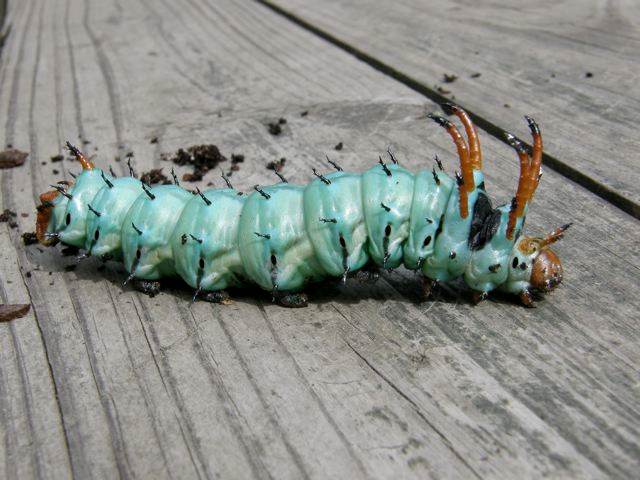
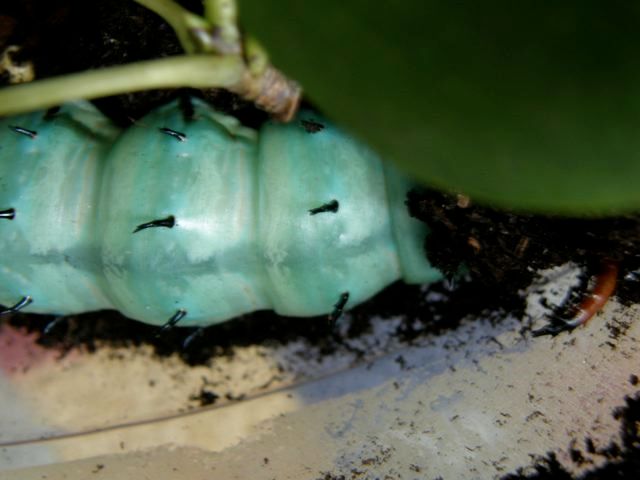
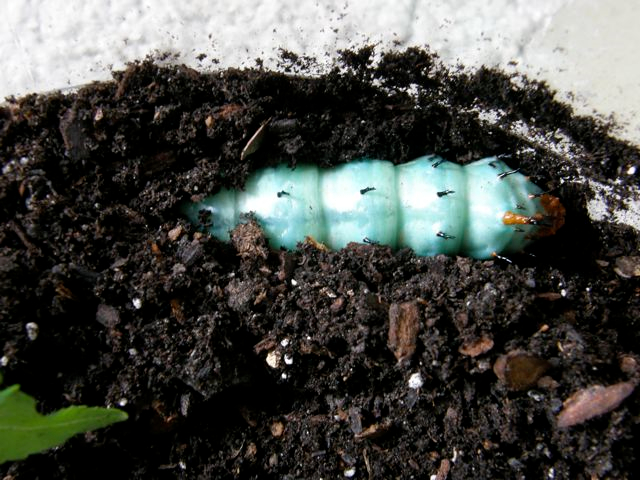
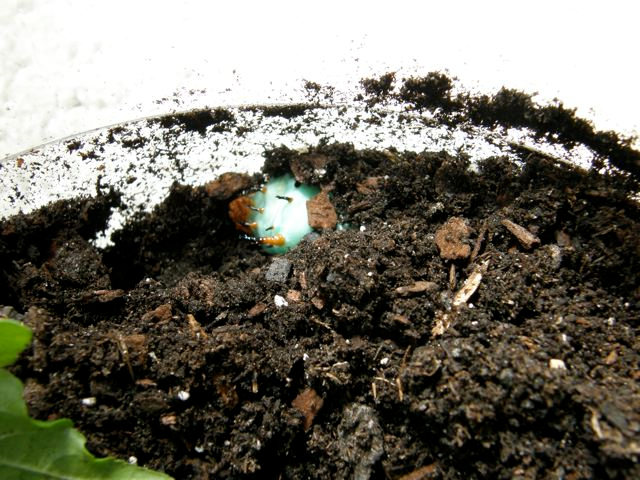
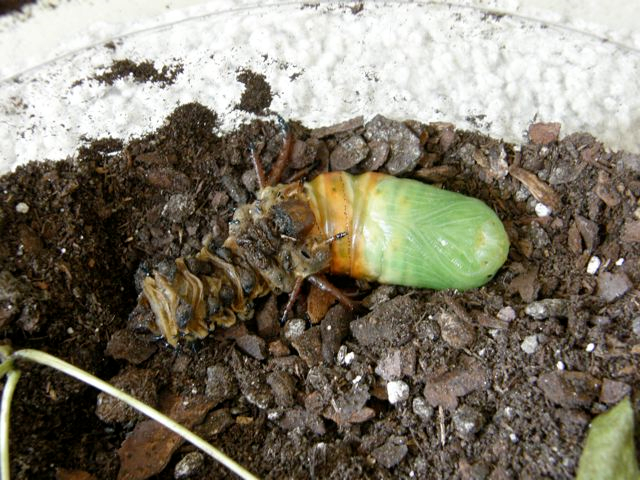
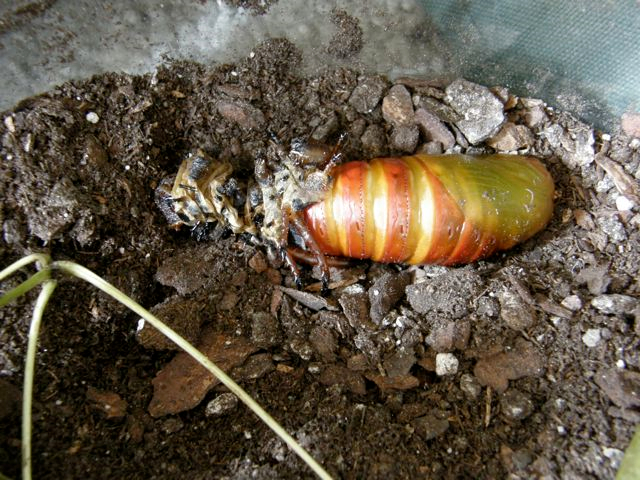
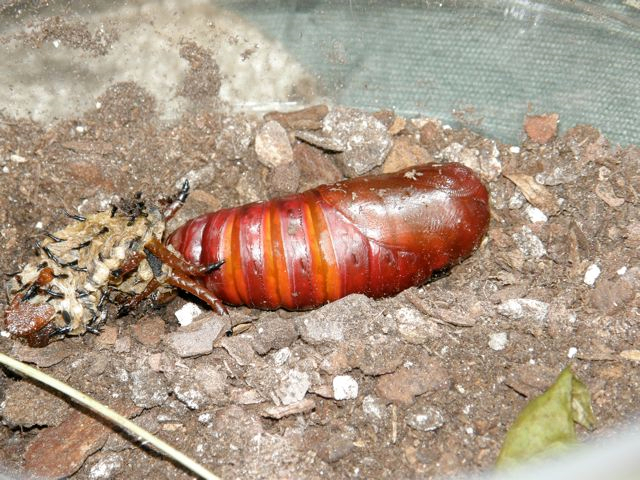
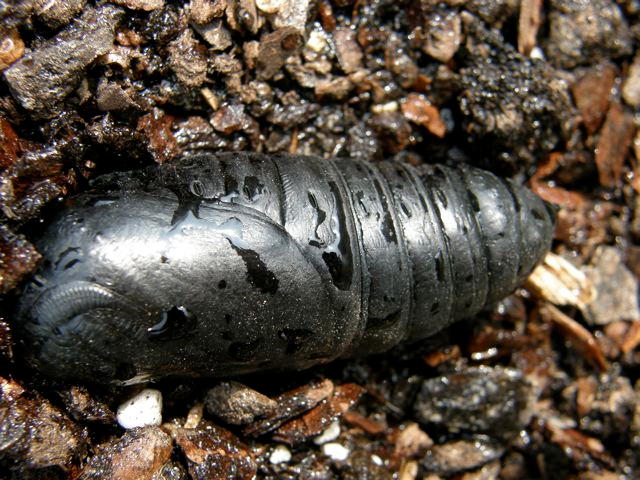
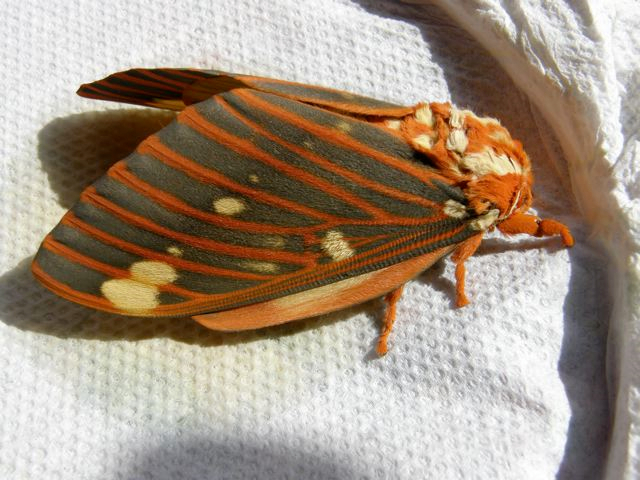
Leah & I saw one of those about 2 years ago (Schenley Park, I think?) It was HUGE! We had to Google “big orange moth” to find out what it was.
awesome. Thanks
Wow, only a week to find another moth of opposite sex, fall in love, get married, & have viable kids! And WE think the process is stressful….
I found a HHD on a sidewalk in Oakland Square last year; it was amazingly gorgeous but kinda scary, green with a bunch of red horns. Afraid to pick it up, looked like it could take a chunk out of my finger if it wanted to. Had to look it up to know what the heck I’d seen. People who’ve never seen one, google “big green caterpillar.”
I’ve read that the female secretes pheromones & the males can travel a mile to find the lady who smells so sweet.
I’ve heard of many animals that use chemicals to attract mates. (I recall a post not to long ago about Dark-eyed Juncos using a similar tactic was published on this very blog not too long ago.)